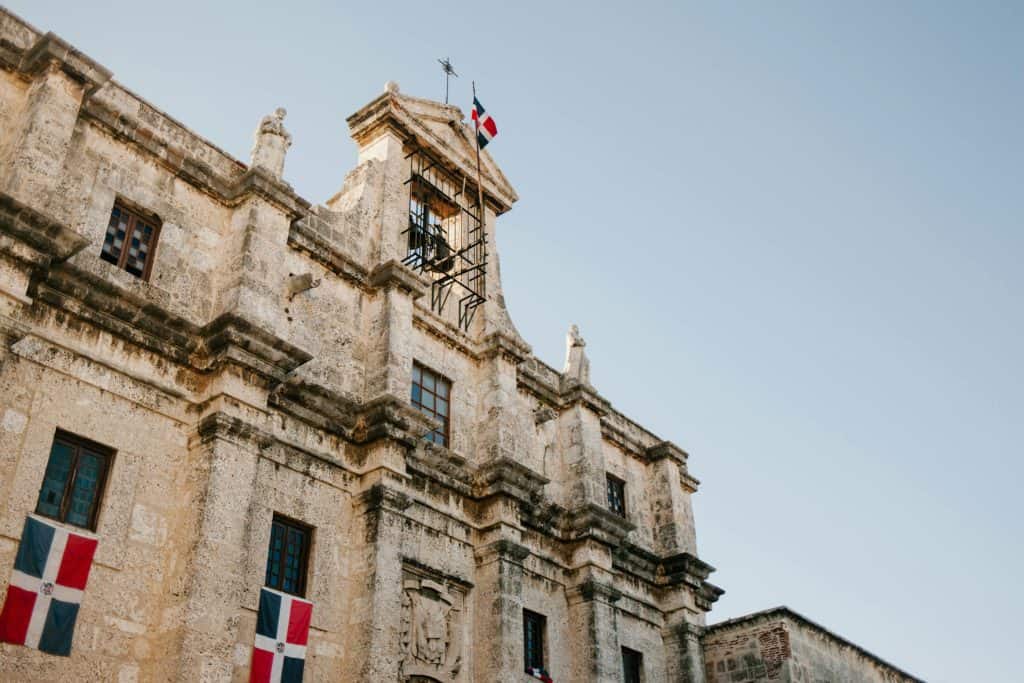El Callejón de los Sueños Cortos: Why a 2-Minute Ride Became My 10-Year Classroom
I still remember the first time I hopped onto a bicycle-taxi—locally crowned a bici—outside the Colón Park in the Colonial Zone. It was 7 p.m.; bachata spilled from a colmado speaker, and my date waited only four blocks away. Four Dominican blocks can feel like four Caribbean novels, especially when you’re negotiating fare in a language you half-own. I had the Spanish Vocabulary for numbers, yes, but not for the dance of “¿Cuánto es?” vs. “¿En cuánto me llevas, mi hermano?” My driver, Omar, winked and replied with a price that sounded suspiciously like the cost of renting the entire bici for a week. That two-minute sprint taught me more about Dominican rhythm, cheeky politeness, and regional slang than any classroom ever could.
Understanding the Ruta Corta: Maps, Minds, and Microeconomía
Why “It’s Close” Means Something Different Here
Dominicans routinely measure distance by fatigue, not meters. Mention “La Duarte, ahí mismo” and you might still pedal ten minutes. When you spend time in Colombia—like my regular escapes to Medellín—you notice paisas love precise addresses. Back in Santo Domingo, proximity is poetic: “cruza esa esquinita y ya”. Mastering this mindset is essential Spanish Vocabulary for any expat who wants to sound local rather than lost.
Hidden Costs, Hidden Opportunities
Bicycle-taxis operate on unwritten tariffs influenced by traffic, weather, and the driver’s mood. Rain adds an automatic “aguacero bonus”. Smiling and starting in Spanish lowers the psychological fare. When I open with a Colombian air—“Parce, ¿me llevas hasta la Churchill?”—the driver tags me as foreign but bilingual, trimming the tourist markup because he senses I can bargain respectfully. Languages are currencies, and regional flavor is small change that tips negotiations in your favor.
Layering Local and Global Spanish Vocabulary on the Go
To negotiate naturally, stack core Spanish with colloquial garnish. Dominicans clip syllables—para becomes pa’, hermano morphs into maníto. Colombians soften consonants, turning amigo into amiii-go. Using both makes you a linguistic amphibian; drivers recognize your effort and respond with kinder fares. Sprinkle exposures like these while chatting, and your Spanish Vocabulary deepens in the wild, not the workbook.
Contextual Mini-Scenes
Scene one: Santo Domingo heat at noon. I approach a bici and ask, “¿Maníto, pa’ dónde ruedas?” The clipped tone signals I’m tuned to the island’s frequency. Scene two: Bogotá’s Sunday ciclovía. A cyclist friend teases, “Parce, ¿le mete pedal hasta la 93 o qué?” I switch to Colombian cadence without missing a breath. Sliding between the two keeps my ear agile, my mouth limber, and fares reasonable on either coast.
Spanish Vocabulary Table
| Spanish | English | Usage Tip |
|---|---|---|
| ¡Dale! | Go ahead / Sure | Universally friendly; in DR it can also mean “speed up.” |
| Maníto | Bro / Buddy | Dominican; instantly casual, drop the r in hermano. |
| Parce | Dude / Mate | Colombian; shows familiarity without disrespect. |
| Piquete | Swagger / Style | DR slang; praising the driver’s ride earns goodwill. |
| Rebús | Traffic jam | Dominican; negotiate higher fares when rebús is heavy. |
| Chévere | Cool / Great | Pan-Latin; keep it in your pocket anywhere. |
| Una vueltecita | A little ride | Diminutives soften negotiations; lowers the perceived distance. |
| ¿En cuánto? | How much? | Short, local alternative to “¿Cuánto cuesta?” |
Example Conversation: Negotiating a Short Ride at Midnight
Context: It’s midnight in Santo Domingo’s Zona Universitaria, light rain, mild traffic. You need a bici-taxi to take you six blocks to an after-hours empanada stand.
—Conductor (DR): **¡Mi reina/tigre, suba, que esto está en candela!**
Driver: Hop on, my queen/bro, the street’s on fire! (very Dominican, informal)
—You: Maníto, es una vueltecita pa’ la Lincoln con Independencia.
Bro, it’s just a little ride to Lincoln with Independencia.
—Conductor: Eso son cien pesos, mi líder.
That’s one hundred pesos, my leader. (DR casual respect)
—You: ¿Cien? ¡Tás loco! Son seis cuadras y el rebús aflojó.
One hundred? You’re crazy! It’s six blocks and the jam eased up.
—Conductor: Bueeeno… bájalo a setenta y arrancamos.
Okaaay… drop it to seventy and we roll.
—You (lighter Colombian tone): Listo, parce, dale.
Alright, dude, let’s go. (Colombian flavor shows bilingual flex)
—Conductor: Agárrate bien, que con esta agua patinamos.
Hold on tight, with this rain we might skid a bit.
—You (after arriving): ¡Gracias, maníto! Tremendo piquete de bici.
Thanks, bro! Awesome bike swagger.
—Conductor: A la orden. Y la próxima, ni hable inglés que te suben la tarifa.
Anytime. And next time, don’t even speak English or they’ll hike the fare.
The Audible Map: Training Your Ear with Wheels and Accents
Riding through the barrios at handlebars-height is an auditory buffet—scooter horns, stray mambos, domino slaps, and yes, shouted fares. Each sound tucks another limb onto your Spanish Vocabulary tree. I recommend treating every bici ride as a five-minute podcast. Tune in, repeat a phrase under your breath, then test-drive it with the next conductor. The city becomes your coach, charging bargain tuition in pesos instead of tuition dollars.
Dominican Melisma vs. Colombian Clarity
Dominicans love vocal slides, stretching syllables like taffy. Colombians clip vowels but articulate consonants. Moving between the two countries fine-tunes your perception of rhythm and volume. When I return from Bogotá, Dominican speech feels like jazz improvisation. After a month in Santo Domingo, Medellín sounds like spoken syllabi. Switching contexts keeps my listening muscles lean; I discourage mental hibernation by hopping flights as often as my passport allows.
Fare Calculation: The Moveable Math of Micro-Transit
Forget Uber’s algorithm. Here, fare math dances. Daytime base price might be fifty pesos for the first five blocks. Add ten pesos for every extra block, fifteen for rain, twenty for late night, five for heavy groceries, and an optional “gringo tax” if you open in English. Yet once you engage in Spanish, especially laced with local idioms, the driver often slices that invisible surcharge. Words save wallets.
Case Study: From 120 to 70 Pesos in Three Sentences
Last Friday, a tourist couple set the price at 120 pesos in English. I hopped on the next bici, greeted the driver with “Mi rey, la Duarte está ahí mismo, ¿eh?” He countered, “Son cien.” I replied, “Eso es un brinquito, compadre.” He laughed, shrugged, and said, “Pues vamos en setenta.” Twenty seconds, thirty pesos saved, all thanks to region-savvy phrasing. That is compound interest on cultural fluency.
Bargain Without Baggage: Politeness, Pride, and Peso Psychology
Dominicans admire verbal agility but despise arrogance. They may call you “gringo” affectionately, then invite you for a cold Presidente. Bargain with humor, not hostility. In Colombia, courtesy lines like “¿Me haces el favor?” grease social cogs. Merge the two: open Dominican, close Colombian. “Maníto, ¿me haces el favor y bajas un chin el precio?” That hybrid sentence tickles ears, lowers fares, and solidifies friendships across coasts.
Reverse-Engineered Classroom: Crafting a Study Routine from Street Dialogues
After every ride, jot fresh expressions in a phone note. Organize them by scenario—rainy ride, crowded market, midnight snack. Later, plug them into spaced-repetition apps. This method mutates Spanish Vocabulary into muscle memory. Traditional classes often isolate words from breath and sweat; bici rides reattach the blood flow, making each term pulse with experience.
Reflections from a Decade on Two Wheels and Two Flags
Ten years of shuttling between Dominican bici-taxis and Colombian ciclovías has crafted my dialect into a Caribbean-Andean alloy. Every pedal push sharpened my ear, and every fare debate polished my tongue. If you’re an expat hungry to learn Spanish as an expat, let the streets be your syllabus. Record the cadences, adapt your register, and watch how quickly drivers become unintentional professors.
I’d love to hear how your own cross-country wanderings have expanded your lexicon. Drop your stories, favorite phrases, or regional hacks in the comments. Together we’ll keep this rolling classroom lively and loud.
¡Nos vemos sobre dos ruedas!
—James


